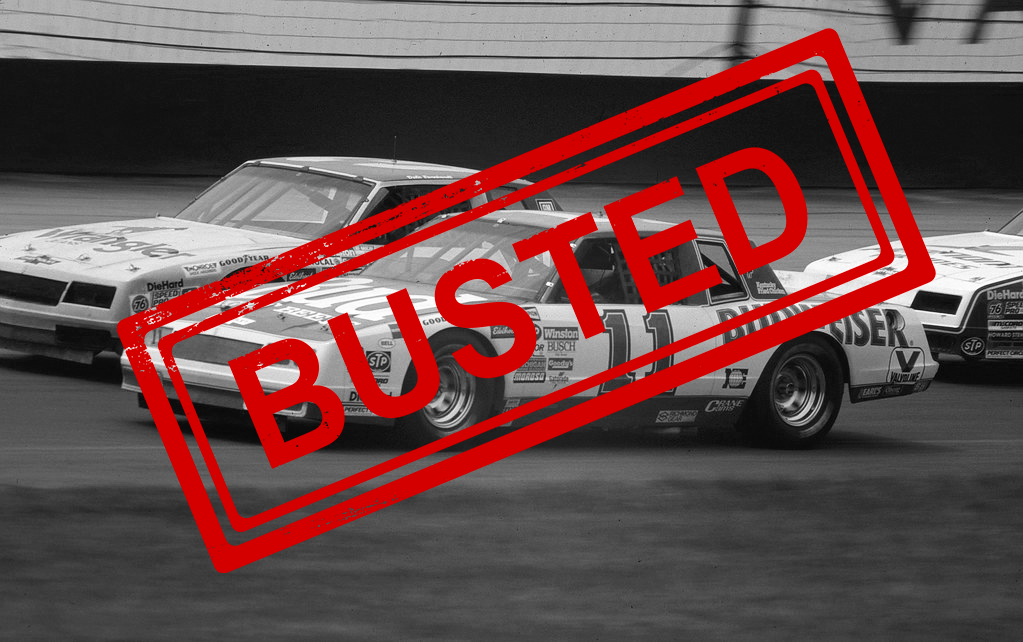The Best NASCAR Cheating Stories


The old saying in NASCAR is “If you ain’t cheating, you ain’t trying”. Race teams to this day look for ways to skirt around the rules to gain a critical edge on competitors. Sometimes, teams get away with it, but sometimes competing teams will sound the alarm bells claiming that there was something illegal going on whether there was something or not. These are some of NASCAR’s best, yet, unsolved cheating conspiracy theories.
In 1985, NASCAR started a new event, “The Winston”, and Darrell Waltrip went on to win the race before immediately blowing his engine after the race, what perfect timing. Many felt that it was a bit too perfect, and they claimed that Junior Johnson, who will be featured again on this list, built that motor to last exactly the length of the race.
Darrell Waltrip responded to that in the above video by saying that, if Johnson did do so, “It’s unbeknownst to me.” That’s not a flat-out denial, so, D.W. seems to think it’s at least plausible.
Early in the 1982 Daytona 500, Bobby Allison’s rear bumper mysteriously fell off the car, and, he eventually went on to win the race. However, competitors quickly pointed out that no rear bumper actually helped Allison as it would decrease the drag of the car, making it go faster.
Crew chief Gary Nelson, a future NASCAR inspector, denied the claim that it was intentional. Despite “Bumpergate”, as it came to be known, Allison was never penalized.
Throughout most of NASCAR’s history, cars were weighed before the race, but not after. This allowed crew chiefs to be creative and put heavy metal in the car before inspection, only to remove it from the car right before the race.
The most ingenious way to go about this came from Darrell Waltrip, as he would unscrew a rod in the cockpit to let hundreds of pounds of lead-shot pellets out of the frame of the car. When NASCAR tried to look for the hole where the pellets came from, they couldn’t find it because it was covered by the jack when the car was jacked up to look underneath. Darrell Waltrip fessed up to this in an above episode of the Dale Jr. Download.
Junior Johnson is featured once again on this list, but, this time, as a driver. According to Mac’s Motor City Garage, Johnson took advantage of some odd NASCAR officiating. With Ford struggling and sitting out races as a result, NASCAR might have been more lenient with the Ford cars coming through inspection.
Johnson decided to enter a 1966 Ford Galaxie that was nowhere near legal, but, NASCAR let it slide. He went on to qualify 3rd, and the car was later displayed in the NASCAR Hall of Fame.
Smokey Yunick was NASCAR’s most notorious cheater of the early days. Some things he got away with, but, others he didn’t. One thing he got away with was using a basketball to give himself extra fuel in the car.
According to carthrottle.com, Yunick inflated a basketball in an oversized fuel tank, so, when NASCAR inspected it, it looked like the fuel tank held as much fuel as regulations would allow. Yunick later took the basketball out of a fuel tank, and that would allow the car to get a couple of additional gallons of fuel. Carthrottle.com claims that there were no rules against this action at the time.
Cheating is much harder to get away with in modern NASCAR, but, these stories will always live on in racing lore. We can only wonder what teams are getting away with now that they will disclose in 25-30 years.
